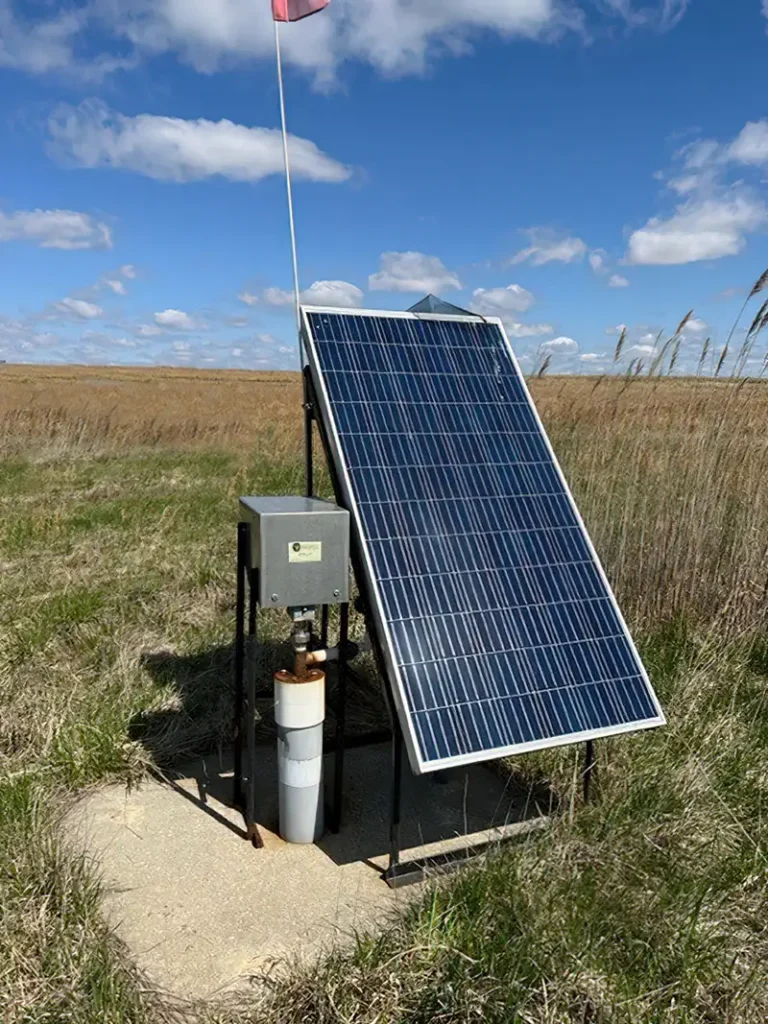When Pumping Matters
Modern solid-waste landfills are usually lined with tightly compacted clay and high-density plastic and typically rely on a liner-bottom gravity-feed system to allow leachate to drain.
At coal-ash sites, burned particulates and CCR minerals can clog the drains. Federal law requires landfills to dewater if leachate levels exceed one foot at liner bottom or perched on top, or if leachate escapes beyond the liner.
Blackhawks On Site Since 2016
Blackhawk solar-powered top-head-drive piston pumps have been on site at coal-ash landfills since 2016 to pump excess leachate, with the goal of returning those operations to compliance and keeping them there.
Blackhawk zero-emission, low-maintenance solar models were chosen because they pump any liquid, of any chemical composition or viscosity, at angles to horizonal, with indifference to pressure.
Pumping Success
The solars are installed at two coal-ash sites not served by trenched pneumatic or electric power.
One large Eastern U.S. site is currently running seven Apollo Solar pumps and reports success in lowering and maintaining leachate at compliance levels, with plans to install another three.
A Midwestern site has been operating five Apollo Solar pumps for several years with equally successful results.
In addition to solar, Apollo top-head-drive models are available with battery and AC-electric power options. Apollos can be customized with specialty materials of construction appropriate for site-specific requirements.
